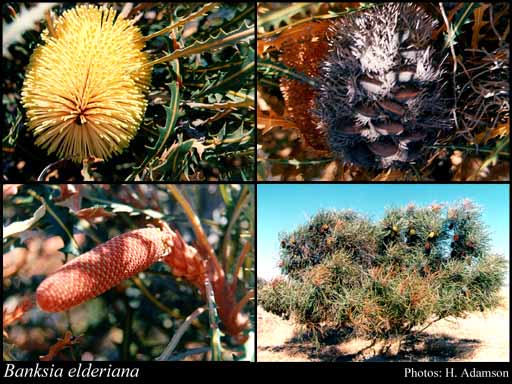- Reference
- Bot.Centralbl. 57:317 (1893)
- Conservation Code
- Not threatened
- Naturalised Status
- Native to Western Australia
- Name Status
- Current
Densely branched, lignotuberous shrub, 1-4 m high. Fl. yellow, Jan to Mar or May. Yellow or brown sand, sometimes with lateritic gravel.

Scientific Description
Shrubs, 1-3 m high; branchlets hairy. Leaves petiolate, alternate, 260-360 mm long, 14-20 mm wide, hairy; petiole 10-20 mm long; lamina flat, once divided, pinnately divided, deeply divided, teeth pointing outwards, with 20-34 lobes on each side, the margins flat. Inflorescences tomentose (with matted or tangled, soft, woolly hairs), yellow, hairy. Perianth 25-27 mm long, glabrous, without awns; pistil 25-28 mm long, straight, style hairy. Follicles hairy, hirsute (with long, rough and coarse hairs), 15-20 mm long. Flowers in January, February, March, April or May. Occurs in the Eremaean (ER) or South-west (SW) Botanical Province(s), in the Murchison (MUR), Great Victoria Desert (GVD), Coolgardie (COO), Avon Wheatbelt (AW), Mallee (MAL) or Esperance Plains (ESP) IBRA subregion(s).
Distribution
- IBRA Regions
- Avon Wheatbelt, Coolgardie, Esperance Plains, Great Victoria Desert, Mallee, Murchison.
- IBRA Subregions
- Eastern Goldfield, Eastern Mallee, Eastern Murchison, Fitzgerald, Merredin, Shield, Southern Cross, Western Mallee.
- Local Government Areas (LGAs)
- Coolgardie, Dundas, Esperance, Kalgoorlie-Boulder, Kondinin, Kulin, Lake Grace, Menzies, Narembeen, Ravensthorpe, Westonia, Yilgarn.